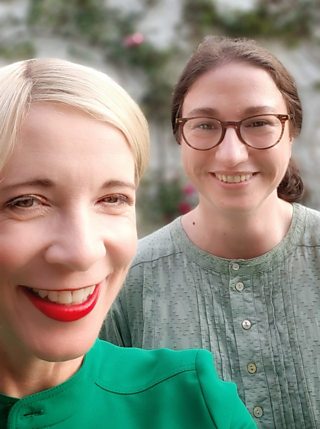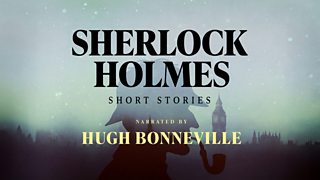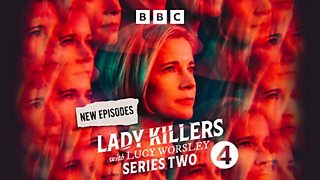Lucy Worsley busts five myths about Agatha Christie
Caroline Crampton and Leandra Griffith
Historian and television presenter Lucy Worsley joins Caroline Crampton on the Shedunnit podcast to sift through the many myths surrounding Agatha Christie.
So how much do we really know about the queen of crime?
Agatha Christie’s novels are ‘lowbrow’ literature.
“There's a whole history of people being dismissive of the quality of Agatha Christie,” Lucy Worsley says. “I get where they're coming from. They're positioning themselves as ‘highbrows’ in the cultural landscape by saying that.
“But now, and this is definitely true in the 2020s in a way that it wasn't before, she is on university syllabuses. The canon of literature has become more inclusive and there is room in it now for people like Agatha Christie.”
Lucy’s sentiments are supported by other guests on Shedunnit (such as Dr Nicola Bishop, who offered an analysis of the way Christie represents lower-middle and working-class characters in recent episode The Nobodies). On the podcast, Christie and other golden age detective fiction writers have been analysed by experts in linguistics, queer theory, and even forensics.
Christie’s childhood home of Ashfield was very important to her.
"Towards the end of her life, I think there is quite a convincing case to be made that Agatha Christie was living with the early stages of dementia,” Lucy explains. “I've come to realise that this affects the way that you remember your life. “It has been explained to me like this: your memories are all like books on a bookcase, with the most recent memories at the top of the bookcase and the older memories at the bottom.
“In dementia, the bookcase starts to sway gently from side to side, so the memories that are higher up that are more recent fall off the shelves. And the ones that stay are the ones of your very earliest childhood years.”
This could be why Agatha Christie’s account of her own life, in her autobiography, has far more detail about her childhood years at Ashfield in Torquay than it does about her career as a bestselling crime writer, giving the impression that her early life was far more important to her.
Lucy is very clear about this one: it just isn’t true.

"I still hate the idea that people don't believe a woman who told us that she was living with a mental illness, to use today's terms"
“That narrative is wrong. It's false, it's misogynist, it's unfair. And it's so dismissive of what I believe to be the truth of what happened. What really happened was that Agatha Christie, I believe, was living with a really terrible incident of mental illness in 1926.
“The things that set it off for her were losing her mother, losing her marriage and also the process of clearing out her childhood home.”
Most Agatha Christie fans know that in 1926, she disappeared for 11 days. It caused an international scandal. The manhunt only ended when she was eventually found staying under a different name at a hotel in Harrogate.
While Christie explained the disappearance and her loss of memory were the result of a nervous breakdown, the press and later generations of fans have come up with other, more sinister theories.
Lucy makes her feelings about this speculation quite clear.
“I don't think that people believe her to this day. That's my great sense of injustice about the life of Agatha Christie, despite her fame and her success. I still hate the idea that people don't believe a woman who told us that she was living with a mental illness, to use today's terms.”
Christie’s first crime novel was The Mysterious Affair at Styles.
It was and it wasn’t, Lucy says. “There's a proto detective story that I came across that I was rather fascinated by.”
Lucy explains that while Christie volunteered as a nurse and a hospital dispenser during the First World War, the young women she worked with produced a hospital magazine to keep up their spirits in dark times.
Among the jokes, there’s a satirical account of “police court news” written by Christie that deals with a mysterious death in the hospital. Everyone is questioned, including the young nurses and dispensers like Christie herself.
“It's detective fiction. It is a proto detective story,” Lucy says. “It's a super early version, I think, of the sort of thing that's going to appear in The Mysterious Affair at Styles. So yes…what everybody thinks, that Styles is inspired by the hospital, is true.
“It's just that here's an interesting little step along the way — this funny little satirical item of police court news in the spoof hospital magazine.”
Agatha Christie said that ‘archaeologists make the best husbands’.
It's a popular saying attributed to Agatha Christie: “An archaeologist is the best husband a woman can have. The older she gets the more interested he is in her.”
Except that Christie never said it and she found it very irritating when it was claimed that she did, Lucy explains.
“The earliest reference I've been able to find to it in print is from 1952. And it's from an organ of the press called the Gothenburg Trade & Shipping Journal. So that's a pretty niche publication, which means that it must have been in wide circulation.”
Agatha Christie’s second husband, Max Mallowan, was an archaeologist, but her contributions to his work were far more substantial than just this glib one-liner. Christie was a major financial backer of her husband’s digs, Lucy reveals in the interview, as well as giving practical help with finds on the site.
More from the 成人快手
-
![]()
Sherlock Holmes Short Stories
Listen to Sherlock Holmes Short Stories, narrated by Hugh Bonneville.
-
![]()
Lady Killers with Lucy Worsley
Lucy Worsley investigates the crimes of Victorian women from a contemporary, feminist perspective.
-
![]()
Betwixt The Sheets
Sex historian Kate Lister uncovers stories that鈥檇 make your history teacher blush.
-
![]()
The Allusionist
An entertainment show about how language works and why we should care.





